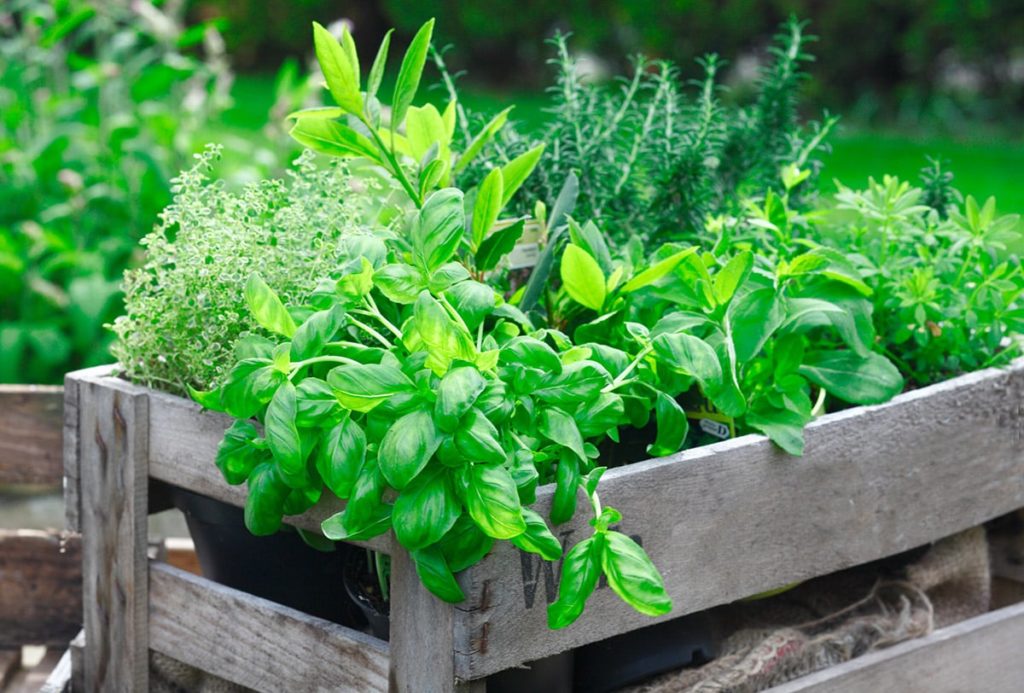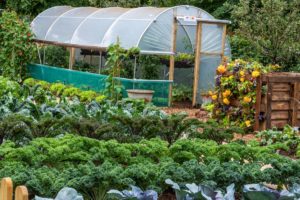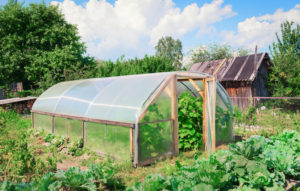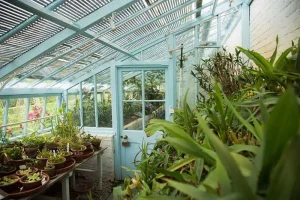As fall approaches and the weather cools down, many gardeners start thinking about planting their winter crops.
While most people focus on root vegetables like carrots and potatoes, there’s an array of herbs that thrive in the cooler temperatures and can provide a productive harvest throughout the fall season.
With proper care and planning, these herbs can not only enhance your cooking but also give you a head start on the next growing season.
Whether you have a small patio container or a large backyard garden, there’s an ideal herb for you to plant this fall that will ensure a productive harvest all year round.
So let’s dive in and explore some of the best herbs to plant in fall for a productive garden!
Winter Hardy Herbs
Plant herbs that are hardy to winter temperatures to ensure a productive garden even during the colder months. Examples include mint, thyme, rosemary, and oregano.
Mint, thyme, rosemary, and oregano are all excellent choices for winter gardens, as they are capable of withstanding freezing temperatures and can continue to produce flavorful leaves and flowers even in the coldest of weather.
These herbs are also relatively easy to care for and can be harvested throughout the winter months, providing a steady supply of fresh produce even during the coldest seasons.
By incorporating these hardy herbs into your winter garden, you can extend the growing season and enjoy a continuous supply of fresh herbs for cooking and medicine, no matter the temperature outside.
Flavorful Leafy Greens
Consider planting leafy greens like kale, spinach, and chard, which continue to thrive in the fall and provide delicious, nutritious harvests.
Looking to extend your gardening season and reap delicious, nutritious harvests well into the fall?
Consider planting leafy greens like kale, spinach, and chard!
These hardy vegetables thrive in the cooler temperatures of autumn, continuing to grow and produce delicious leaves even as the days shorten and the nights chill.
To get started, choose a sunny spot in your garden with well-draining soil that’s rich in organic matter.
Kale, spinach, and chard all prefer a slightly acidic pH, so if your soil is too alkaline, amend it with compost or well-rotted manure.
Plant the seeds or seedlings in late summer or early fall, spacing them about 6-8 inches apart to allow for proper air circulation and disease prevention.
Water them well and keep the soil consistently moist, but not waterlogged.
As the weather cools, your leafy greens will appreciate a layer of mulch or a frost blanket to protect them from frost and enhance soil health.
Simply spread a 2-3 inch layer of organic matter like straw or bark chips over the soil, or drape a lightweight frost blanket over the plants to trap warmth and retain moisture.
Throughout the fall, keep an eye on your leafy greens for signs of pests or diseases, and take action promptly if you notice any issues.
Otherwise, simply enjoy the bounty of delicious, nutritious harvests well into the cooler months!
Bolting Herbs
Plant herbs that bolt or go to seed quickly, such as lettuce, to ensure multiple harvests before the cold weather sets in.
If you want to maximize your herb harvests before the cold weather hits, consider planting herbs that bolt or go to seed quickly.
These plants, such as lettuce, will produce multiple harvests before the first frost, ensuring that you can enjoy fresh herbs throughout the growing season.
To get the most out of these fast-growing herbs, be sure to plant them in well-draining soil and provide plenty of sunlight and water.
You can also consider succession planting, or planting a new round of lettuce every few weeks, to ensure a continuous harvest.
With a little bit of planning and attention, you can enjoy a bountiful supply of fresh herbs all summer long.
Cool-Season Herbs
Cool-season herbs like parsley, dill, and cilantro do well in the fall and can provide a bountiful harvest before the winter.
As the weather cools in the fall, cool-season herbs like parsley, dill, and cilantro come into their own, thriving in the crisp air and producing a bountiful harvest before the onset of winter.
These hardy herbs are ideal for fall gardens, as they can withstand light frosts and continue to grow and flourish even in the cooler temperatures.
With proper care, you can enjoy a generous harvest of fresh herbs throughout the fall season, using them in a variety of dishes and preparations.
For example, parsley is perfect for adding a fresh, herbaceous flavor to autumn soups and stews, while cilantro can be used as a garnish or added to salsas and dips for a burst of bright, citrusy flavor.
Dill can be used to make delicious pickles or added to sauces and marinades for a tangy, herbaceous taste.
By planting these cool-season herbs in the fall, you can extend your growing season and enjoy a bountiful harvest long after the warm weather has passed.
Extend Your Growing Season
Plant fall herbs in late summer or early fall to extend your growing season and enjoy a longer period of fresh herbs.
Planting fall herbs in late summer or early fall is a smart move for gardeners looking to extend their growing season and enjoy a longer period of fresh herbs.
By planting herbs such as basil, cilantro, dill, and parsley in the late summer or early fall, you can harvest them well into the autumn season, even as the weather cools and the days grow shorter.
This is especially beneficial for those who live in areas with mild winters, as it allows you to continue growing herbs year-round.
Planting fall herbs can help to prevent soil compaction and improve soil health, as the cooler weather and decreased growth of other plants allows the soil to breathe and recover from the summer’s heat and moisture.
So, if you’re looking to keep your herb garden thriving well into the fall, be sure to plant fall herbs in late summer or early fall for a bountiful and flavorful harvest.
Frost Hardy Herbs
Plant frost-hardy herbs like chives, garlic, and onions that can survive light frosts and continue to produce leaves throughout the fall.
If you’re looking to add some frost-hardy herbs to your garden this fall, consider planting chives, garlic, and onions.
These hardy plants can survive light frosts and continue to produce leaves throughout the season.
In fact, many gardeners find that the flavor of these herbs is enhanced by the cooler temperatures of fall.
To get started, simply plant the seeds or seedlings in well-draining soil and full sun.
Chives and garlic can be harvested as soon as they reach maturity, while onions take a bit longer to grow.
With proper care, these frost-hardy herbs will continue to thrive and provide you with fresh leaves and flavorful bulbs all the way until the first frost.
So why not give them a try and enjoy the bounty of your fall garden?
Perennial Herbs
Plant perennial herbs like sage, lavender, and rosemary that come back year after year and provide consistent yields.
Perennial herbs like sage, lavender, and rosemary are hardy plants that will come back year after year, providing consistent yields.
These plants are perfect for gardeners who want low-maintenance plants that will produce reliable harvests.
Sage, for example, is a versatile herb that can be used in a variety of dishes, from pasta sauces to roasted meats.
Lavender, meanwhile, is a beautiful addition to any garden, with its fragrant flowers and delicate foliage.
And rosemary is a drought-tolerant herb that thrives in well-drained soil and full sun.
All of these herbs are easy to grow and require little upkeep, making them ideal for busy gardeners or those new to gardening.
With proper care, these perennial herbs will provide bountiful yields for years to come, making them an excellent choice for anyone looking to cultivate a productive and beautiful garden.
Consider Your Climate
Choose herbs that are well-suited to your region’s climate and growing conditions to ensure a productive and successful garden.
When selecting herbs for your garden, it is important to consider the region’s climate and growing conditions to ensure a productive and successful harvest.
Different herbs thrive in different environments, so choosing varieties that are well-suited to your area’s temperature, humidity, and sunlight levels can make a significant difference in their growth and flavor.
For example, mint and lemon balm prefer cooler temperatures and partial shade, while rosemary and thyme can tolerate hotter conditions and full sun.
Considering the specific growing conditions in your area can help you choose herbs that require less maintenance and are more resistant to pests and diseases.
By selecting herbs that are well-suited to your region’s climate and growing conditions, you can enjoy a bountiful and flavorful harvest all season long.
Want More? Dive Deeper Here!
Hey there! If you’re the type who loves going down the rabbit hole of information (like we do), you’re in the right spot. We’ve pulled together some cool reads and resources that dive a bit deeper into the stuff we chat about on our site. Whether you’re just killing time or super into the topic, these picks might just be what you’re looking for. Happy reading!
- Five Fall Herbs for the Home Garden – Gardening Solutions – University of Florida, Institute of Food and Agricultural Sciences
- FALL IS FOR HERBS | Archives | Aggie Horticulture
- Five cold-hardy herbs to grow at home | OSU Extension Service
- Growing Herbs – Tip Sheet #8 | King County | Washington State University
- Herbs | Home & Garden Information Center






